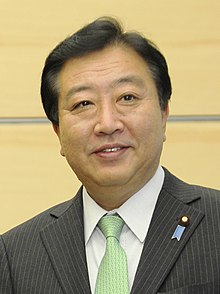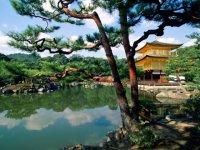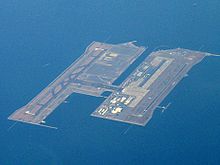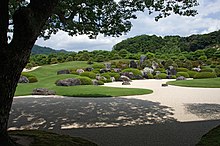
The Prime Minister of Japan (内閣総理大臣 Naikaku-sōri-daijin) is the head of government of Japan. He is appointed by the Emperor of Japanafter being designated by the Diet from among its members, and must enjoy the confidence of the House of Representatives to remain in office. He is the head of the Cabinet and appoints and dismisses the Ministers of State; the literal translation of the Japanese name for the office is Minister for the Comprehensive Administration of the Cabinet or Minister that Presides over the Cabinet.
The office was created in 1885, four years before the enactment of the Meiji Constitution. It took its current form with the adoption of the current constitution in 1947.
The current Prime Minister is Yoshihiko Noda, who took the post on 2 September 2011.
Appointment
The Prime Minister is designated by both houses of the Diet, before the conduct of any other business. For that purpose, each conducts a ballot under the run-off system. If the two houses choose different individuals, then a joint committee of both houses is appointed to agree on a common candidate. Ultimately, however, if the two houses do not agree within ten days, the decision of the House of Representatives is deemed to be that of the Diet. Therefore, the House of Representatives can theoretically ensure the appointment of any Prime Minister it wishes.[1] The candidate is then formally appointed to office by the Emperor.[2]
The Prime Minister must resign if the House of Representatives adopts a motion of no confidence or defeats a vote of confidence, unless the House of Representatives is dissolved within ten days.[3]
[edit]Qualifications
- Must be a member of either house of the Diet. (This implies a minimum age of 25 and a Japanese nationality requirement.)
- Must be a "civilian". This excludes serving members of the Japan Self-Defense Forces, as well as any former member of the Imperial Japanese Army and Imperial Japanese Navy who is strongly connected to militarist thought. Note that former military officers from the World War II era may be appointed prime minister despite the "civilian" requirement, Yasuhiro Nakasone being one prominent example.
[edit]Role
[edit]Constitutional roles
- Exercises "control and supervision" over the entire executive branch.[4]
- Presents bills to the Diet on behalf of the Cabinet.[5]
- Signs laws and Cabinet orders (along with other members of the Cabinet).[6]
- Appoints all Cabinet ministers, and can dismiss them at any time.[7]
- May permit legal action to be taken against Cabinet ministers.[8]
- Must make reports on domestic and foreign relations to the Diet.[5]
- Must report to the Diet upon demand to provide answers or explanations.[9]
[edit]Statutory roles
- Presides over meetings of the Cabinet.[10]
- Commander in chief of the Japan Self-Defense Forces.[11]
- May override a court injunction against an administrative act upon showing of cause.[12]
History
After the Meiji Restoration, the Daijō-kan system, which was used in the Nara period, was adopted as the Japanese government entity. Political powers of their leader, Daijō Daijin and his aides,Sadaijin and Nadaijin were ambiguous and frequently conflicted with other positions such as Sangi. In the 1880s, Itō Hirobumi, then one of Sangi, started to examine the reformation of the governmental organization. In 1882, Ito and his staff, Itō Miyoji and Saionji Kinmochi, traveled to Europe and investigated constitutions in constitutional monarchies, the British Empire and theGerman Empire. After his return to Japan, Ito urged the need of a Constitution and a modern governmental system and persuaded conservatives to approve his plan.
On December 22, 1885, in the Daijō-kan order No. 69, abolition of Daijō-kan and the induction of the Prime Minister (内閣総理大臣) and his cabinet were published.
[edit]Official office and residence
The Office of the Prime Minister of Japan is called the Kantei (官邸). The original Kantei served from 1929 until 2002, when a new building was inaugurated to serve as the current Kantei.[13] The old Kantei was then converted into the Official Residence, or Kōtei (公邸).[14] The Kontei lies to the southwest of the Kantei, and is linked by a walkway.[14]
[edit]Honours and emoluments
Until the mid-1930s, the Prime Minister of Japan was normally granted a title in the peerage (kazoku) usually just prior to entering office if he had not already been ennobled. Titles were usually bestowed in the ranks of count, viscount or baron, depending on the relative seniority and status of the Prime Minister. The two highest ranks, marquess and prince, were only conferred upon extremely senior statesmen, and were not conferred upon a Prime Minister after 1916. The last Prime Minister who was a peer was Baron Kijuro Shidehara, who served as Prime Minister from October 1945 to May 1946. The peerage was abolished by the Supreme Commander Allied Powers in October 1947.
Depending on tenure, the Prime Minister is ranked in the first place in accordance, or second. Certain eminent Prime Ministers have been awarded the Order of the Chrysanthemum, typically in the degree of Grand Cordon. The highest honour in the Japanese honours system, the Collar of the Order of the Chrysanthemum, has only been conferred upon select Prime Ministers and eminent statesmen, and rarely when they were still alive; the last such award to a living Prime Minister was to Saionji Kinmochi in 1928. More often, the Order of the Chrysanthemum has been a posthumous award; the Collar of the order was last awarded, posthumously, to former Prime Minister Sato Eisaku in June 1975. The most recent posthumous award of the Grand Cordon was toHashimoto Ryutaro in July 2006. Currently, Nakasone Yasuhiro is the only living former Prime Minister to hold the Grand Cordon of the Order of the Chrysanthemum, which he received in 1997.
Since the 1920s, Prime Ministers have typically been conferred the Grand Cordon of the Order of the Rising Sun, or the Grand Cordon of the Order of the Paulownia Flowers (until 2003 a special higher class of the Order of the Rising Sun), depending on tenure and eminence. However, honours may be withheld due to misconduct or refusal on the part of the Prime Minister (for example,Kiichi Miyazawa).
[edit]List of Prime Ministers from 1982 - 2012
| Name | Term of office | Dates of birth and death |
|---|---|---|
| Yasuhiro Nakasone | 1982–1987 | 1918-05-27 |
| Noboru Takeshita | 1987–1989 | 1924-02-26 – 2000-06-19 |
| Sōsuke Uno | 1989 | 1922-08-27 – 1998-05-19 |
| Toshiki Kaifu | 1989–1991 | 1931-01-02 |
| Kiichi Miyazawa | 1991–1993 | 1919-10-08 – 2007-06-28 |
| Morihiro Hosokawa | 1993–1994 | 1938-01-14 |
| Tsutomu Hata | 1994 | 1935-08-24 |
| Tomiichi Murayama | 1994–1996 | 1924-03-03 |
| Ryutaro Hashimoto | 1996–1998 | 1937-07-29 – 2006-07-01 |
| Keizo Obuchi | 1998–2000 | 1937-06-25 – 2000-05-14 |
| Yoshirō Mori | 2000–2001 | 1937-07-14 |
| Junichiro Koizumi | 2001–2006 | 1942-01-08 |
| Shinzō Abe | 2006–2007 | 1954-09-21 |
| Yasuo Fukuda | 2007–2008 | 1936-07-16 |
| Taro Aso | 2008–2009 | 1940-09-20 |
| Yukio Hatoyama | 2009–2010 | 1947-02-11 |
| Naoto Kan | 2010–2011 | 1946-10-10 |
| Yoshihiko Noda | 2011– | 1957-05-20 |























